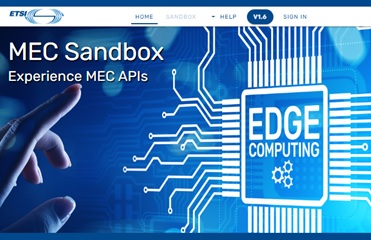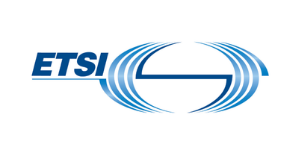Hackathon Description:
- Edge Computing provides developers with localized, low-latency resources that can be utilized to create new and innovative solutions, which are essential to many application vertical markets in the 5G era.
- ETSI’s ISG MEC is standardizing an open environment that enables the integration of applications from infrastructure and edge service providers across MEC (Multi-access Edge Computing) platforms and systems.
- LF Edge’s Akraino project offers a set of open infrastructure and application Blueprints for Edge, spanning a broad variety of application vertical use-cases. Each blueprint offers a high-quality full-stack solution that is tested and validated , that are validated by the community.
- The purpose of this Hackathon is to demonstrate an innovative Edge Application or Solution focused on the following application vertical use-cases with supporting ETSI MEC Service APIs and LF Edge Akraino Blueprint resources:
- Automotive: Realize a vehicular use case or service to enable intelligent traffic control, driving capabilities, increased safety, etc.
- Mixed and Augmented Reality: Realize an immersive application enabling interactivity of physical systems and human experiences.
- Edge Computing and 5G: Deploy and use 5G and hybrid edge infrastructure to enable federation for distributed edge applications
However, teams are also encouraged to be creative and propose to develop solutions in other application verticals than these highlighted.
We are hoping for some surprises!!
- ETSI MEC offers a set of open standardized Edge Service APIs to enable the development and deployment of edge applications at scale. OpenAPI representations are available and development ready on forge.etsi.org/rep/mec. For this Hackathon, the following MEC Services are applicable:
- MEC011– Edge Platform Application Enablement (Mp1): MEC App and Service Support and Management (e.g., MEC application registration, MEC service advertisement and discovery)
- MEC012– Radio Network Information Service (RNIS): 4G / 5G radio network contextual info
- MEC013– Location Service: network and geo-location information about terminals and infrastructure, etc.
- MEC021– Application Mobility Service (AMS): relocation of user context between MEC application instances across deployed MEC platforms
- MEC028– WLAN Access Information Service (WAIS): WiFi network contextual info
- MEC030– V2X Information Service (VIS): predicted quality of service for vehicle routes
ISG MEC offers additional APIs to those highlighted and teams are encouraged to use any of them
 Teams will be provided with a dedicated instance of the ETSI MEC Sandbox for their work over the duration of the Hackathon. The MEC Sandbox is an online environment where developers can access and interact with live ETSI MEC Service APIs in an emulated edge network set in Monaco, which includes 4G, 5G, & WiFi networks configurations, single & dual MEC platform deployments, etc.
Teams will be provided with a dedicated instance of the ETSI MEC Sandbox for their work over the duration of the Hackathon. The MEC Sandbox is an online environment where developers can access and interact with live ETSI MEC Service APIs in an emulated edge network set in Monaco, which includes 4G, 5G, & WiFi networks configurations, single & dual MEC platform deployments, etc.
The ETSI MEC Sandbox is offered here: try-mec.etsi.org. For information, please refer to the Sandbox user guide (link), and the “Getting Started with the Sandbox” (link) & the “What’s new in the ETSI MEC Sandbox” (link) webinars
For more information on the ETSI MEC (including MEC architecture and MEC APIs), you can check the specification tab at this URL. Also, please refer to the ETSI white paper “Developing software for MEC”, available via this link, for information on developing using ETSI MEC Service APIs.
LF Edge Akraino offers the following Blueprints that are relevant for the Hackathon proposed edge application verticals:
- Automotive:
MEC-based Stable Topology Prediction for Vehicular Networks: This blueprint enables a promising infrastructure where a stable network topology can be predicted locally to improve the network performance by providing intensive calculation for vehicles in the adjacent roads. Thus, converging the two concepts of MEC and topology prediction can provide a strong use case for the vehicular networks such as proactive path stabilization. - Mixed and Augmented Reality:
Virtual Classroom (Integrated Edge Cloud Type 4): a fully integrated edge infrastructure solution, and the project is completely focused on Edge Computing. This open-source software stack provides critical infrastructure to enable high performance, reduce latency, improve availability, lower operational overhead, provide scalability, address security needs, and improve fault management. The IEC project will address multiple edge use cases and industry, not just Telco Industry. IEC intends to develop solutions and support carrier, provider, and the IoT networks. IEC Type 4 is focused on AR VR applications running on edge. - Edge Computing and 5G:
- Integrated Cloud Native NFV/App stack family: A reference architecture/integration initiative targeting edge computing use cases by enabling edge clouds with Intel-optimized ingredients including: SRIOV, QAT, CSI/Optane, OpenNESS, Clear Linux, K8s HPA.
- Public Cloud Edge Interface (PCEI) blueprint: Enables a set of open APIs, orchestration functionalities and edge capabilities for DevOps Multi-domain Infrastructure Orchestration and application deployment across the Operator Network Edge, the Public Cloud Core and Edge, the 3rd-Party Edge as well as the underlying infrastructure such as Data Centers, Compute Hardware, and Networks.
- Enterprise Applications on Lightweight 5G Telco Edge (EALTE): EALT-EDGE BP intends to provide a edge computing platform along with application orchestration & management to host enterprise applications on lightweight Telco Edge. BP provides platform capabilities and features like Multi-Tenancy, Network-Isolation, Dynamic Orchestration, Network Capabilities exposure, enhanced identification etc. as needed for “MEC in an Enterprise Setting”. Various applications were tested on EALT-EDGE, for example, Smart Shelf for Retail Enterprise as part of Remote Office Branch Office (ROBO).
- Challenge winning criteria will include:
- Innovation – how novel is the submitted edge app or service?
- Use-Case / Solution Credibility – how realistic is the solution commercially?
- Use of ETSI MEC Service APIs – especially, the use of multiple service APIs and interworking with them
- Use of LF Edge Akraino Blueprints – use of blueprints as solutions in any given focus area, or as an enabling platform for the solution in a focus area or across multiple focus areas, use of blueprints to interact with or implement ETSI MEC services
- Quality – quality of submission deliverables
- Pitch and Demonstration – quality of the team’s pitch (only for the selected short list)
- Teams are not required to use a specific edge hosting platform or MEC lifecycle management APIs. Developers may use any virtualization environment of their choosing. For teams that need edge computing resources including bare metal provisioned with operating systems and Internet access, these resources will be provided by the Equinix Metal platform (note that the teams will be responsible for installing their own VM and container environments). Information can be found at https://metal.equinix.com/
- Teams are encouraged to reuse their existing or past projects with their applications and apply/adapt them to the present challenge.


